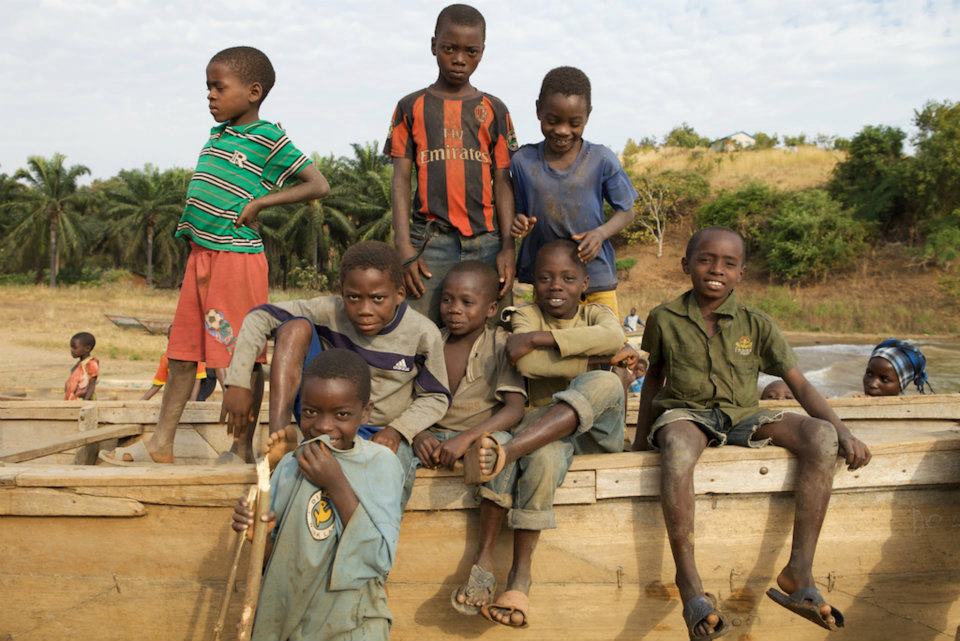We’ve been working 14+-hour days now for as long as I can
remember, and TENSIONS ARE RUNNING HIGH.
I look around every once in awhile and try to spot the
secret video cameras, because I swear we’re all unknowing test subjects in a
warped study on human endurance. Turns out
people need time off or they start to Lose Their Minds…or at very least start having
vivid mental fantasies about, oh, I don’t know…forcefully pushing coworkers off
boats, tripping people down stairs, or throwing their Kindle’s into the lake (just
to name a few... off the top of my head…)
But as we say on Team Tanganyika, there is no punishment for mental crimes ;).
Sensing that I might be on the verge, Pete told me I could
hang back from boat work yesterday and have a few hours off the water. But it
was Deep Cast day and I really didn’t want to miss out since it’s an activity
that has potential to be super cool. Or it would be super cool if JUST ONCE our
gear would cooperate (SPOILER ALERT! Our equipment failed! Again! I know…it was
a shocker to me as well since everything had been going so smoothly up until
this point…)
So: the deep cast. Benja and Pete got a fancy new piece of
equipment this year that can record temperature at Super-Deep Depths (the limit
on most instruments is the intense pressure at depth). Again, casts are a good
way to monitor the thermocline, see if upwelling is occurring (i.e., evidence
of cooler water higher in the water column), and document changes in water temp
since the last published study 8 years ago.
So we loaded up our gear, pointed the boat west towards the Congo,
and drove until we could no longer see land (~12km offshore).
I’ll say that
again: WE COULD NO LONGER SEE LAND (Have I mentioned lately how ridiculously
big this lake is!). The weather was eerily (and very uncharacteristically) calm and absolutely perfect for the task at hand.
 |
| Yes, I am wearing the same clothes in every single blog post, because apparently I no longer care about personal hygiene.... It's tight quarters in the old Zodiac with all that Heavy Gear. |
We finally arrived at our destination, Benja slowly lowered the instrument down to 1200 meters
(!!!!!!!), and then it was time to bring it up with the winch. It became
progressively harder as we took turns cranking away, and at some point we
noticed the pile of metal shavings that accompanied the loud metal-on-metal
screeching sound. It took THREE people (given, I wasn’t as much help as the
guys here) FORTY-FIVE minutes to get it back to the surface, and that was the
end of our adventure since further use would have likely irreparably damaged
the winch.
 |
| Sadly Pete lost his field hat, so he re-purposed some boxers for his last day in the field. He assured me they were clean... |
After the cast, we intended to send the Niskin bottle down to collect
water every 50 or 100m throughout the water column, checking the conductivity
and filtering/collecting water for nutrients. Tanganyika is permanently
stratified, so this part (while ridiculously annoying on some level, because it’s
so tedious and physically taxing) is actually really awesome. Last year around
100m the water started smelling strongly of sulfur, and after a quick glance
among my team members to identify the guilty party, I realized the stench was
coming from the water. Pete said that water had been at that depth for over
1500 years (!!!), and THAT is incredible.
 |
| This is from last year's collection since I apparently don't have a current Niskin bottle pic. |
Alas, that task will have to wait for another day, and we reluctantly turned the
boat around and headed home. Take home message: the lake is warming (sigh), and
the thermocline is a’rising.
 |
| Rumpelstiltskin? Benja managed to fix the winch with an old saw blade (appropriate technology!). Here he's changing out the wire on the spool. |




































